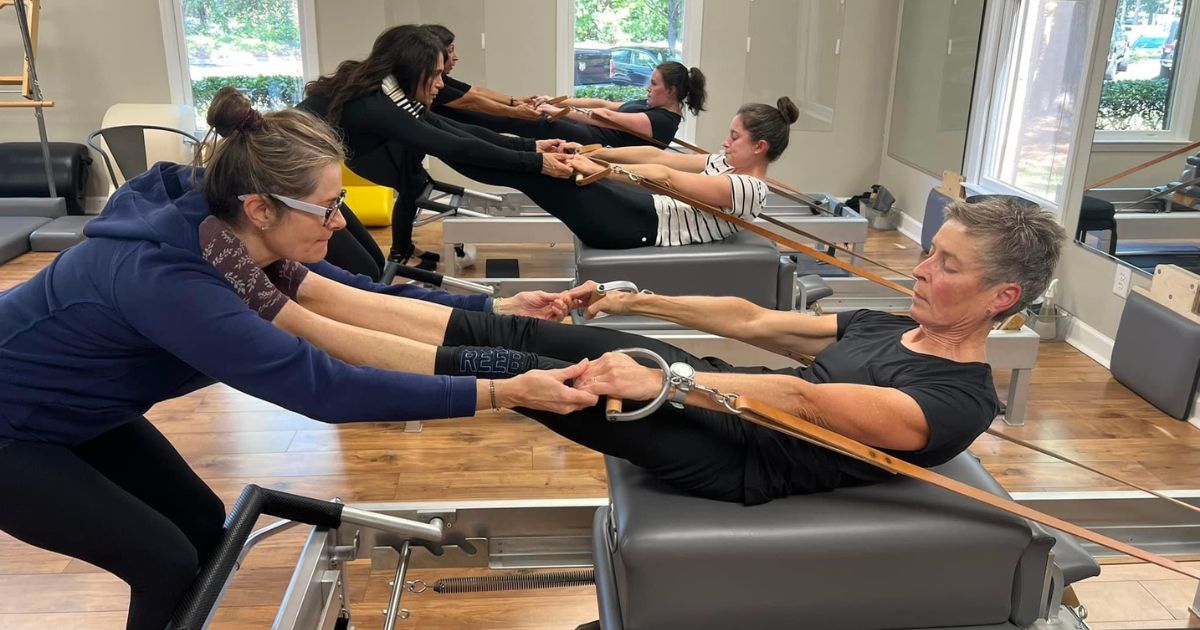When you think of Pilates, images of serene studios and controlled movements on specialized equipment might come to mind. However, what truly sets Pilates apart from other fitness practices is its fundamental principle of dynamic movement – a never-ending two-way stretch. Pilates is about movement—fluid, continuous, and transformative.
The Dynamic Nature of Pilates
Developed by Joseph Pilates in the early 20th century, Pilates was originally called “Contrology,” reflecting the emphasis on controlled movements and mindful practice. This method was designed to strengthen the body uniformly, improve flexibility, and enhance overall physical fitness. Unlike some fitness routines that focus solely on building muscle mass or burning calories, Pilates aims to create a balanced body that is both strong and supple.
The Principle of Two-Way Stretch
At the heart of Pilates is the concept of the two-way stretch. This concept involves simultaneously lengthening the body in opposite directions, creating a sense of dynamic tension and never a static hold. For example, let’s look at Round from Stomach Massage on the reformer. Imagine your upper body lifting up and rounding forward while at the same time from the waist down you are lengthening down into the carriage on the reformer. It’s like a tug of war inside your body, energetically. This dual action ensures that the body is always engaged, never static, and continuously working towards improved alignment and balance and of course, working from the powerhouse.
Stretching and Strengthening Simultaneously
One of the unique aspects of Pilates is its ability to stretch and strengthen the body simultaneously. Traditional workouts often focus on either flexibility or strength, but Pilates combines both elements. The two-way stretch principle ensures that as one muscle group is lengthened, its opposing group is engaged and strengthened. We work the muscles concentrically and eccentrically. What this means is that we strengthen a muscle in its most lengthened and shortened state. We stretch it and strengthen the entirety of the muscle, not just the “belly” of the muscle. This balanced approach helps to create a harmonious and functional body, capable of fluid and efficient movement.
Adapting to Every Body
Pilates is inherently adaptable, making it suitable for individuals of all fitness levels and abilities. Whether you are a beginner or an advanced practitioner, Pilates offers a range of exercises that can be modified to meet your needs. This adaptability ensures that the practice remains dynamic and challenging, allowing for continuous growth and progression.
The Journey of Never-Ending Improvement
The dynamic, two-way stretch nature of Pilates ensures that it is a practice of never-ending improvement. As you progress in your Pilates journey, you will find that there is always room for growth. Each session builds on the last, helping you to develop a deeper understanding of your body and its capabilities. This continuous journey of improvement keeps Pilates engaging and rewarding, encouraging lifelong practice.
Uncovering New Layers
In my experience, both clients and instructors sometimes mistakenly believe that once they have mastered a Pilates exercise, there is no need for further refinement. However, Pilates is a practice of perpetual evolution. Each time you revisit an exercise, you peel back another layer of the onion, uncovering new insights and deeper levels of understanding. This ongoing process of discovery is what keeps Pilates fresh and exciting, even after years of practice.
Conclusion
Pilates is far from a static exercise routine. The two-way stretch concept ensures that it is a dynamic and ever-evolving practice. By combining continuous movement and the simultaneous stretching and strengthening of muscles, Pilates creates a balanced and functional body. Whether you are new to Pilates or a seasoned practitioner, the journey of Pilates is one of constant motion and never-ending growth. Embrace the two-way stretch, and discover the transformative power of this dynamic practice.

